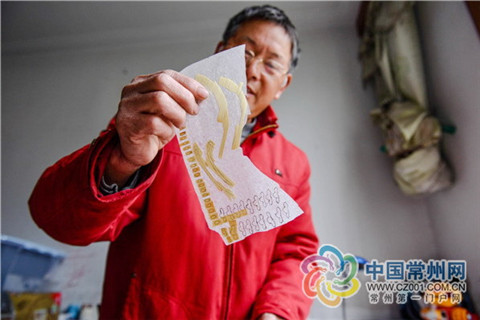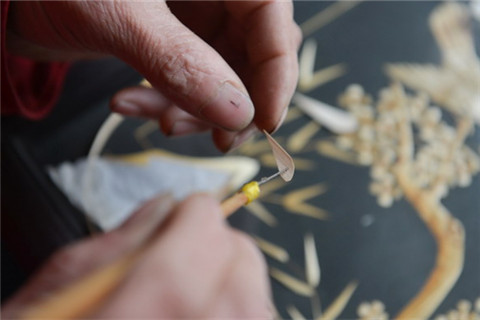Straw painting is a traditional craft in the Chinese countryside and can be traced back to the Tang Dynasty (618-907). The artworks are made from wheat straw and are usually shaped into representational images.
In the Weicun community of Changzhou, Jiangsu province, a 58-year-old villager, has been devoted to the craft for over 40 years. Wang Aiqing became a designer in a local straw painting workshop after graduating from school in the 1970s. Although straw paintings didn't sell well at that time and the workshop was soon closed, the craft became a lifetime hobby of Wang.
To create a straw painting, the first step is to acquire the perfect straw. "The first section of a straw in spring is the best material," Wang explains, "this part is of the greatest ductility. I store bunches of this kind of straw at home every spring."
Wang then trims the straw and cuts the two terminals of each straw. He uses knives to shape the straw and organize shapes. This process requires patience and sophisticated control of force.
Wang irons the straw to shade the shapes and make the images more three-dimensional. The key part of this step is to keep the right temperature. Even one or two degrees too high can burn the straw and destroy the whole work.
Wang still keeps straw paintings he created 40 years ago in his study now. "It's a slow craft," says Wang, "I'm trying to create more works that I can be satisfied with and pass on the technique to my children."
 |
|
Wang Aiqing displays a semi-finished straw painting. [Photo/CZ001.com] |
 |
|
Trimming the straw requires patience and sophisticated control of force. [Photo/CZ001.com] |
For a scholar focusing on Australia's public diplomacy, working as a recreational manager in China may never be part of his career path. But Bradley McConachie does have lots to say now about his special experience at a resort in the picturesque tropical coastal city of Sanya in South China's Hainan province.

One of the potentially most traumatic things a girl has to go through is finding a new hairdresser.